GitHub Actions Certification
GitHub Actions in the Enterprise Cloud
Documenting GitHub Actions
When building complex CI/CD pipelines with GitHub Actions, clear and accessible documentation is essential for maintainability and collaboration. Use this guide to standardize your approach, whether you prefer GitHub Wikis or Markdown files in a centralized repository.
Why Document GitHub Actions?
Well-documented workflows reduce onboarding time, improve reproducibility, and ensure your team follows consistent practices. For more details, see GitHub Actions Documentation.
Documentation Methods
Select the method that best fits your organization’s needs:
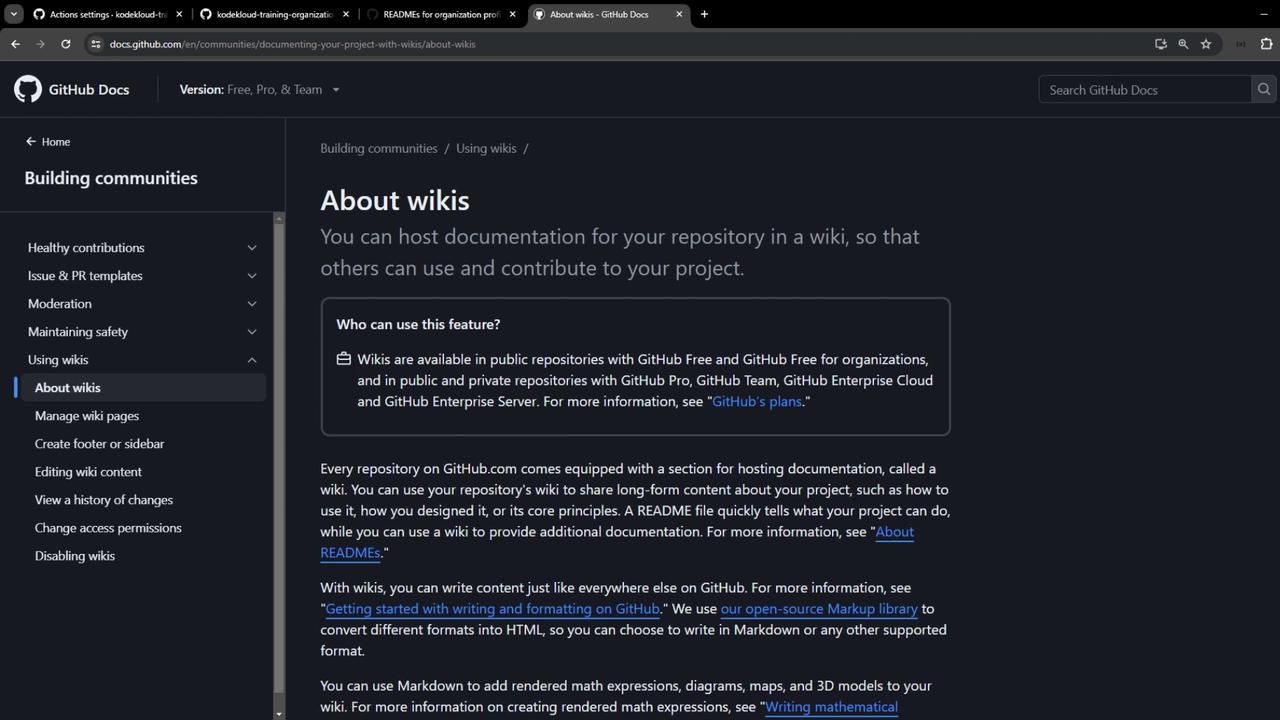
1. GitHub Wiki
Every repository on GitHub.com includes a Wiki, perfect for:
- Long-form guides (design decisions, architecture overviews)
- Collaboration on process and standards
- Versioned, sidebar-organized content
2. Markdown Files in Repositories
Store documentation as Markdown directly in your repos:
README.mdfor repo-level overviews- Dedicated
.githubrepository for organization-wide standards
Using an Organization Profile README
Organizational profiles can display a custom README to highlight key workflows and standards.
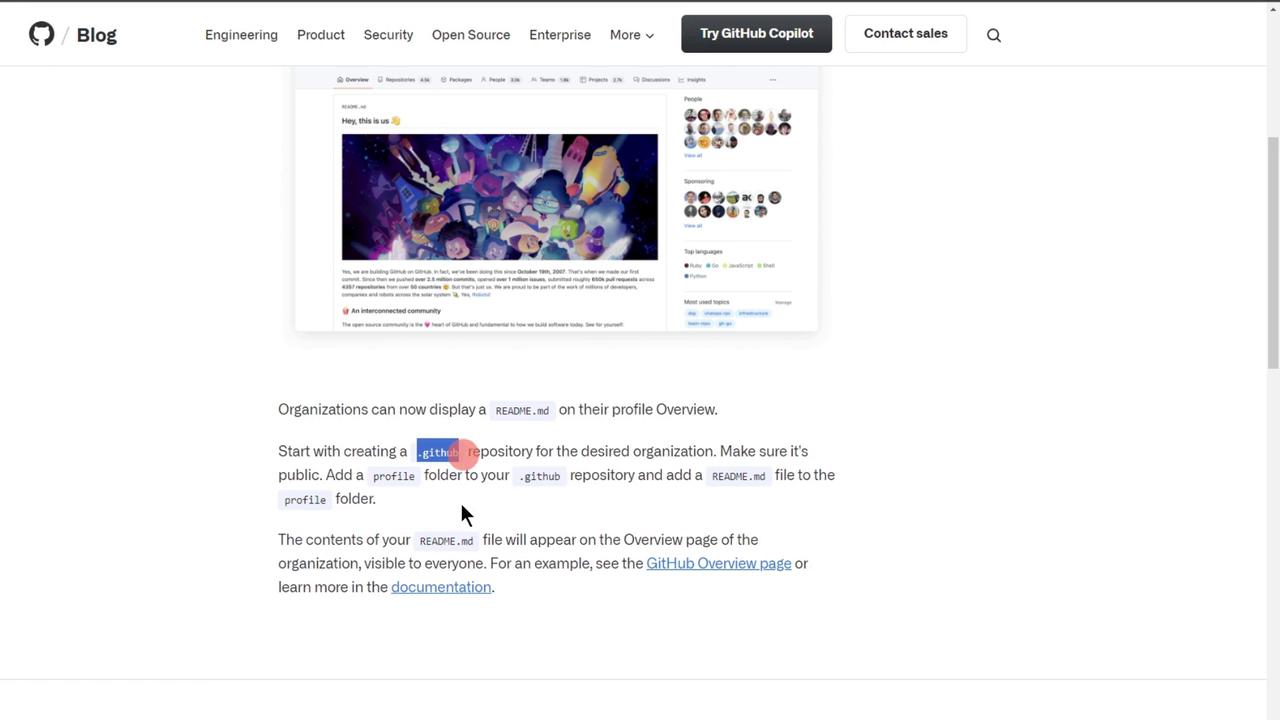
Step 1: Create or Open the .github Repository
Navigate to your organization and open (or create) the .github repository.
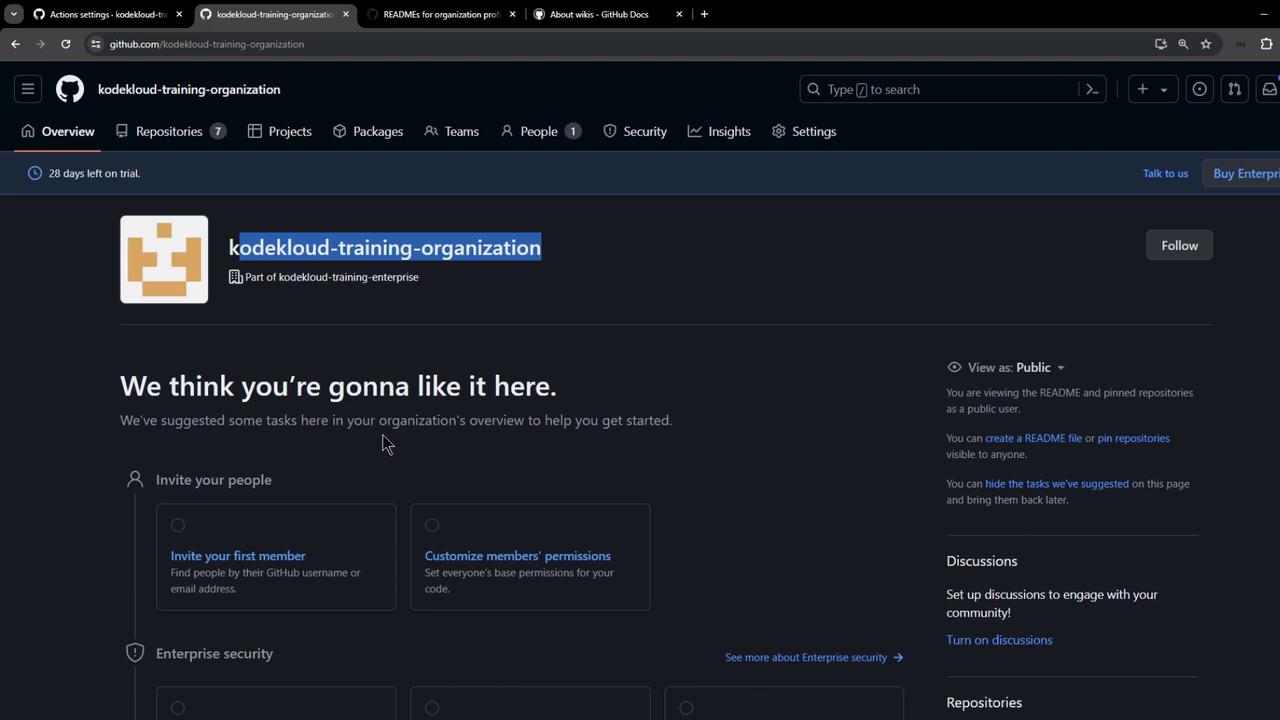
Step 2: Add the profile/README.md
- In
.github, create a folder namedprofile. - Inside
profile, addREADME.mdwith your documentation.
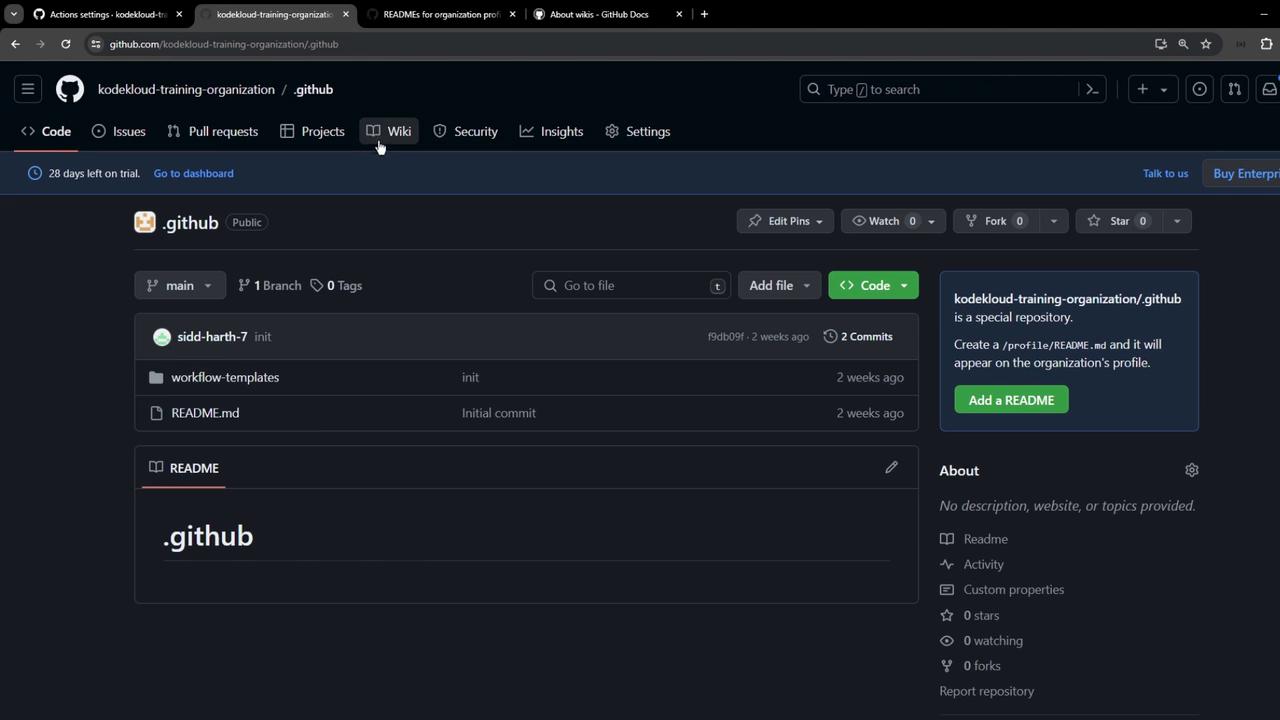
Example profile/README.md:
Welcome to the KodeKloud Organization NodeJS CI starter workflow.
## Overview
Provides a starter CI workflow tailored for NodeJS projects.
## Categories
- NPM Config
Commit your changes to apply.
Step 3: Verify on Your Organization Profile
Return to your organization’s main page to see the new README displayed.
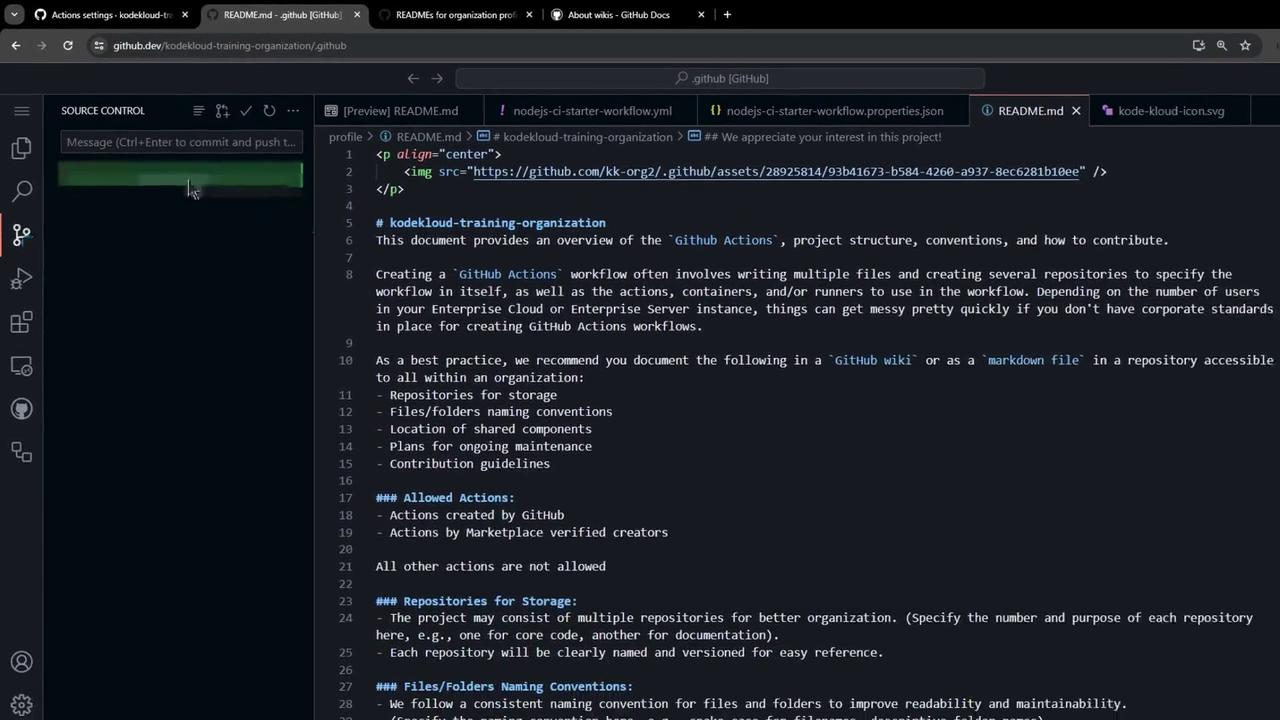

Keep Docs Up to Date
Treat your documentation as code: review and update it alongside workflow changes to prevent drift.
Key Documentation Elements
Ensure your documentation covers the following:
| Resource | Description |
|---|---|
| Naming Conventions | Standardize repository and folder names |
| Workflow Locations | Specify directories for reusable actions and jobs |
| Approved Actions | List verified Marketplace or custom actions |
| Maintenance Plans | Define update frequency and ownership |
By following these guidelines, you can maintain clear, consistent, and SEO-friendly documentation for your GitHub Actions workflows.
Links and References
Watch Video
Watch video content